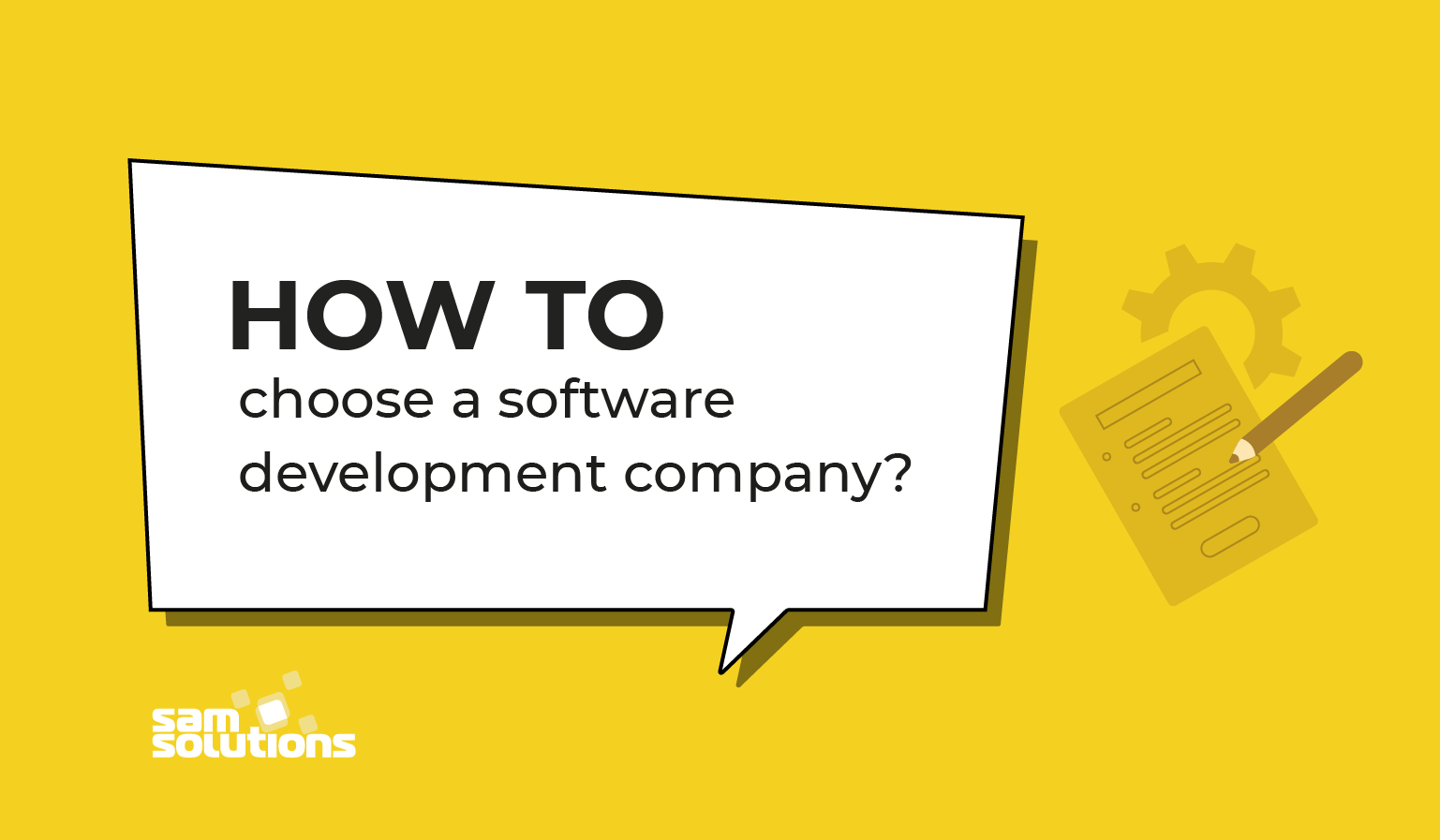Whether you’re a late stage startup looking for an effective growth strategy, or simply want to learn more about how to outsource software development, our extensive guide on the subject covers everything you need to know. First, let’s review some of the main challenges that tech startups face.
Main Challenges of a Tech Startup
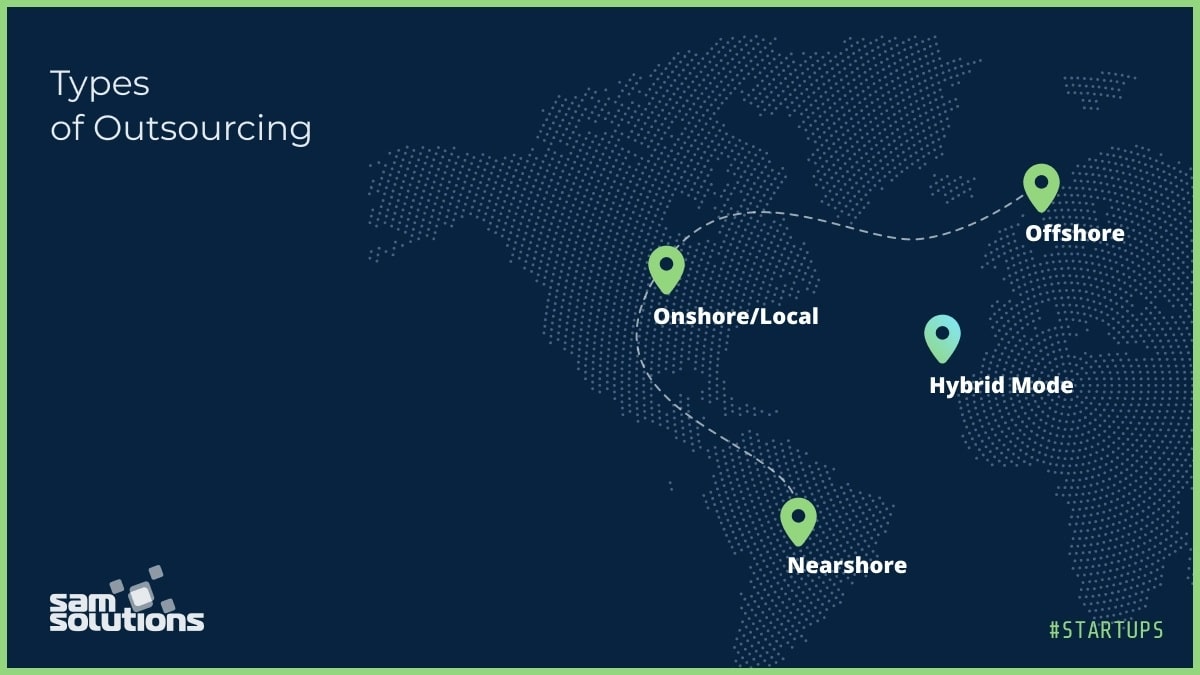
The challenges of beginning a tech startup are reflected in the low productivity growth rates in major economic markets like that of the US. There, the rate has decreased by nearly 60% from the averages experienced throughout the latter half of the 20th century. To invigorate the global economy by adding more successful tech startups, business owners must address these key challenges:
1. Lack of funding to hire a full local team.
The vast majority of tech startups today simply cannot be operated solely by two innovators in a storage facility. Unfortunately, many are unable to finance hiring the full team necessary for timely success, especially on a local level.
In addition, if sufficient talent isn’t available locally, it can be even more expensive to recruit regional talent – not to mention the relocation costs.
Startups willing to look to an outsourcing firm for crucial team members have nearly immediate access to a number of professionals without the need to search locally or provide moving expenses.
Outsourcing software development for startups directly addresses this challenge.
2. Lack of funding to create infrastructure.
Another challenge common to tech startups is the large amount of financial resources needed to create the infrastructure necessary for business.
From environments to dev tools and especially hardware, these aspects can prove a significant financial hurdle. This is why many startups are left wondering how to outsource software development.
While some have had success partnering with other local tech firms, the logistics and financial requirements for these solutions oftentimes create more challenges than they solve.
Depending on the nature of the startup, outsourcing certain infrastructure elements like data centers, networks, security, and management can ease the financial burden and increase focus on other key areas of the startup.
3. Accessibility of short-engagement tech teams for solving immediate needs.
Tech startups often utilize tech teams to solve issues experienced early on in the launch.
Throughout the life of the business as well, a more established startup may need access to teams on a temporary basis or as a short engagement to meet a particular need. Local teams are often in short supply or may not hold the necessary expertise for these needs.
Outsourcing software development for startups can address these issues in multiple ways – outsourcing firms often engage in short-term software projects and have the ability to supply a team of project-area experts at a lower cost than sourcing a local group.
4. Trust of potential investors.
No matter the nature of the startup, garnering investor support is a chief hurdle to overcome.
Not only is it financially difficult to fund the various aspects of a startup without investors (see above), but continued investor support is key to the growth of a startup in the future. However, it can be difficult to build investor trust with yet-unproven technology or innovations that may be difficult for non-industry investors to understand.
Partnering with an established tech firm for infrastructure, team members, and more can help new startups better engage with potential investors and prove the merit of innovations and technology.
The key to understanding how to outsource software development comes down to knowing how to select the right partner for your particular needs.
5. Quickly scaling when needed.
Once a startup is off the ground, the challenges are not completely in the rearview mirror. In fact, a successful startup will often encounter so much positive growth that it is difficult to adequately scale development teams, infrastructure, and other valuable assets as needed. The inability to scale can mean the ultimate stagnation of tech startups.
Utilizing a tech outsourcing firm can result in the speedy provision of temporary or permanent development team members, infrastructure solutions, and more, allowing startups to scale quickly as growth continues.
Scalability is one of the primary reasons why numerous tech startups are interested in developing strategies around how to outsource software development.
Startup Level Challenges & Solutions
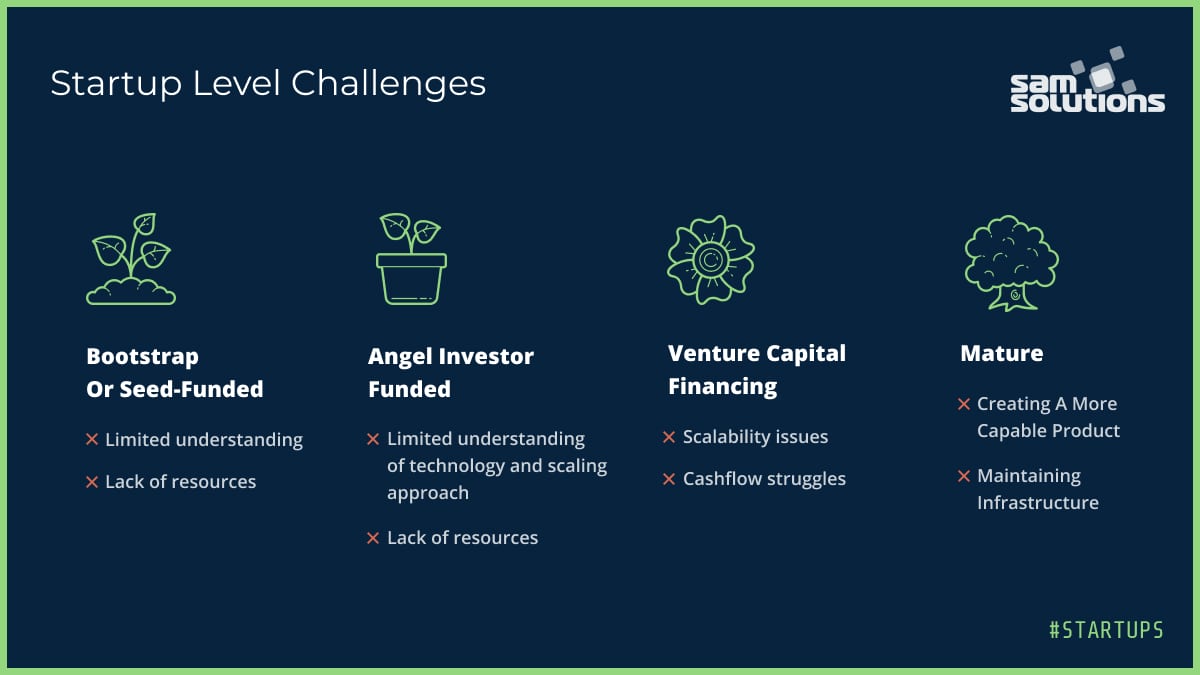
By necessity, startups progress through multiple stages on their way to becoming mature businesses established enough to maintain growth largely on their own.
These stages, often delineated by the type of funding or financing necessary during each, form an effective overview of the financial life of a business. It’s important to be aware of the funding intricacies and business challenges involved within each stage.
Startup Challenges and How Outsourcing Can Solve Them
Fortunately, many startup challenges experienced during each level can be at least partially addressed by outsourcing (which is one of the main reasons why we created our guide on how to outsource software development). The major levels, their challenges – and their solutions – include:
1. Bootstrap or Seed-Funded Startup Challenges
At the very beginning of a tech startup’s life, funding is used to complete market research and develop the tech product or software in question. This funding is primarily procured from the owner’s own savings or even friends and family. This level also regularly involves seed funding, via a loan or even stock selloffs. Challenges frequently experienced at this level include:
- Limited understanding. Startup founders and entrepreneurs likely have a solid tech idea or innovation in mind but may not have a full understanding of the technologies, architecture, or roadmap to bring the idea to fruition.
- Lack of resources. Developing the first prototype to demonstrate to potential investors can take a great deal of collaboration, financial commitment, and insight.
Outsourcing software development for startups can help access the expertise necessary for launch and provide some borrowed authority to present to investors. Use the form at the bottom of the page if you’re interested in learning more about how to outsource software development with SaM Solutions US.
2. Angel Investor Funded Startup Challenges
After seed capital and friends and family have reached their limits, startups continue to need financing to continue to develop and innovate. At this level, a wealthy individual often steps in to provide a large amount of funding in a tech startup that has shown promise. Challenges occurring at this level often include:
- Limited understanding of technology and scaling approach. Once the prototype or initial tech product is viable, the next hurdle looms – how can entrepreneurs achieve a market-ready product once proof of concept and minimal viable product (MVP) are in-hand?
- Lack of resources. Here, too, lack of resources is an issue – startups on this level continue to need resources to create a more functional MVP for market.
Outsourcing for startups can help both investors and entrepreneurs develop a deeper understanding of the technology at hand and help provide access to the infrastructure and team members necessary to scale.
3. Venture Capital Financing Startup Challenges
Startups at this level are well on the way to producing and distributing the tech product or service in question but may not be profitable in doing so. At this point, multiple rounds of venture capital financing may be necessary to keep the business moving forward.
- Scalability issues. As mentioned, these startups have the product already on the market but may struggle to make it scalable and maintainable.
- Cash flow struggles. During this stage, startups often experience issues with optimizing costs to minimize losses and remain profitable.
During this level, startups can benefit from outsourcing new development teams, help desk, infrastructure management, and other team members necessary for growth. Doing so can save the cost and time necessary to hire and scale locally.
4. Mature Startup Challenges
By the time a startup reaches this level, it has become fully established within the business community and is optimizing its product or service offerings to capture more of the market. Financing at this level can consist of bridge loans or result in the company “going public” and selling stock to the public through an initial public offering (IPO).
Challenges at this level involve:
- Creating a more capable product. While the product, in one iteration or another, has been offered for some time, a mature startup requires a fully capable market ready product.
- Maintaining infrastructure. Whether the startup chooses a cloud infrastructure, a multi-tenant platform, or integrations with multiple third party solutions, users must deal with GDPR compliance, security concerns, user manuals, and documentation for the support team.
Infrastructure or infrastructure maintenance outsourcing can help startups handle the majority of the above-listed concerns. Meanwhile, outsourcing software development for startups can utilize renowned experts to efficiently enhance the product.
Major Outsourcing Models
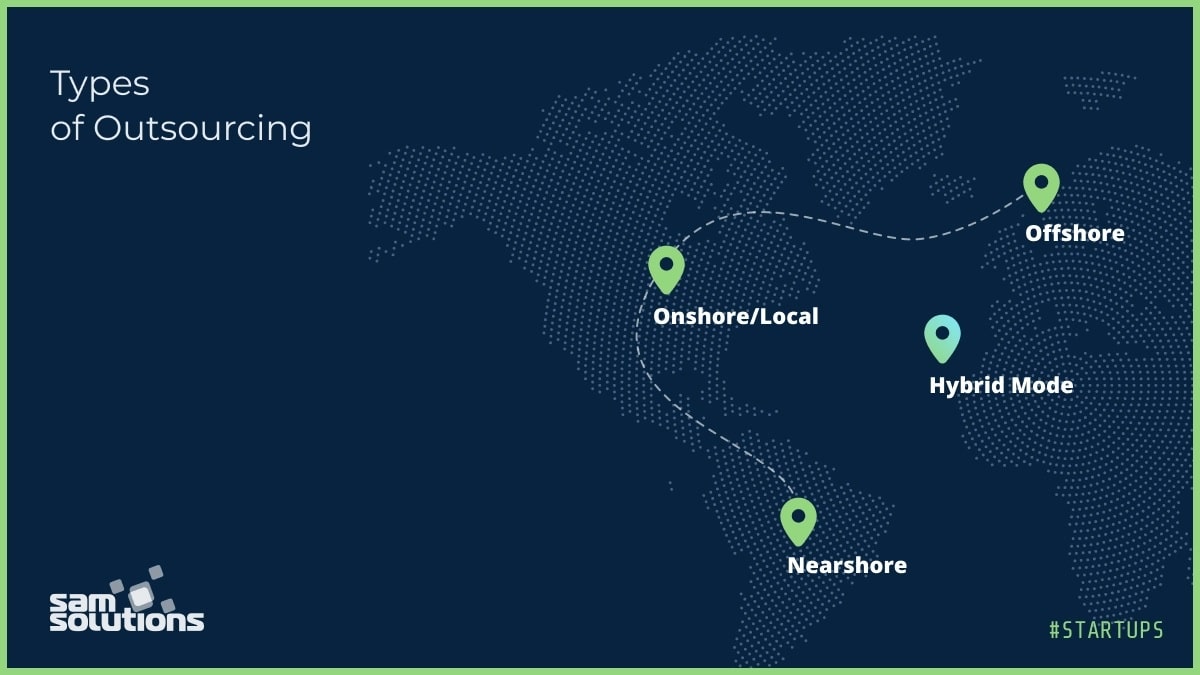
If you’re the owner of a tech startup considering outsourcing to overcome any of the above challenges, carefully consider your needs first. Depending on the nature of your business and the current challenges you’re experiencing, the type of outsourcing model you choose can change depending on the level of startup you’ve achieved.
Outsourcing models are sorted by the location of the outsourcing team. Location-based outsourcing models include:
- Nearshoring. Nearshore outsourcing narrows your outsourcing search to a region or country relatively close to your own. Primarily, the focus remains on outsourcing to a firm within the same time zone to allow for easier communication between your team and your partner. In addition, nearshoring is often less expensive than finding local talent.
- Offshoring. This type of outsourcing broadens the focus outside your region or time zone and allows you to choose from a pool of talent on a global basis. This option often comes at a lower cost than nearshoring and offers many of the same benefits with the advantage of a much larger selection of partners and models. As an added benefit, most reputable offshoring firms hire partners fluent in English and staff talent according to your time zone, further easing communications.
- Onshoring/local outsourcing. The most limited of the outsourcing models, onshoring limits you to finding a team local to you. While this can have the benefit of building relationships with local investors and afford you relatively little worry regarding communication, onshoring comes with its own costs. Local talent is often more expensive and selection from your local talent pool can be relatively limited.
Alternatively, you may want to focus your outsourcing search on the pricing and contract models available. Typically, you can choose from these three potential models:
- Fixed bid contracts. Startups typically use fixed bid outsourcing contracts for large-scale and green field projects, including waterfall-type and Agile-based projects. You’ll pay a single, predetermined price for tech outsourcing, usually once a project is completed or until milestones determined by your particular startup challenge occur, As a result, the financial risk is attributed to your outsourcing partner – meanwhile, you’ll need to develop a list of criteria for the contract as well as a means of assessing progress, which may be challenging if your startup is new or lacks a proper IT manager.
- Time and materials (T&M) contracts. Instead of paying a fixed price, T&M contracts rely on receiving a bid from the outsourcing partner. Bid amounts depend on the time and materials the partner anticipates using during the outsourcing relationship. However, while you can often save money by endeavoring to outline the project thoroughly, if you fail to do so, you’re likely to go over budget or experience frequent delays.
- Incentive-based contracts. Also known as hybrid contracts, these contracts incentivize your outsourcing partner meeting goals related to performance, deadlines, or other parameters. For example, some partners offer a retainer-based contract where you can pay initially for full-time work from an expert or team; then, you’ll receive a discount should you choose to hire the individual(s) for an extended period. In this way, incentive-based contracts can provide additional motivation beyond a T&M or fixed-bid contract.
How to Select Your Outsourcing Partner
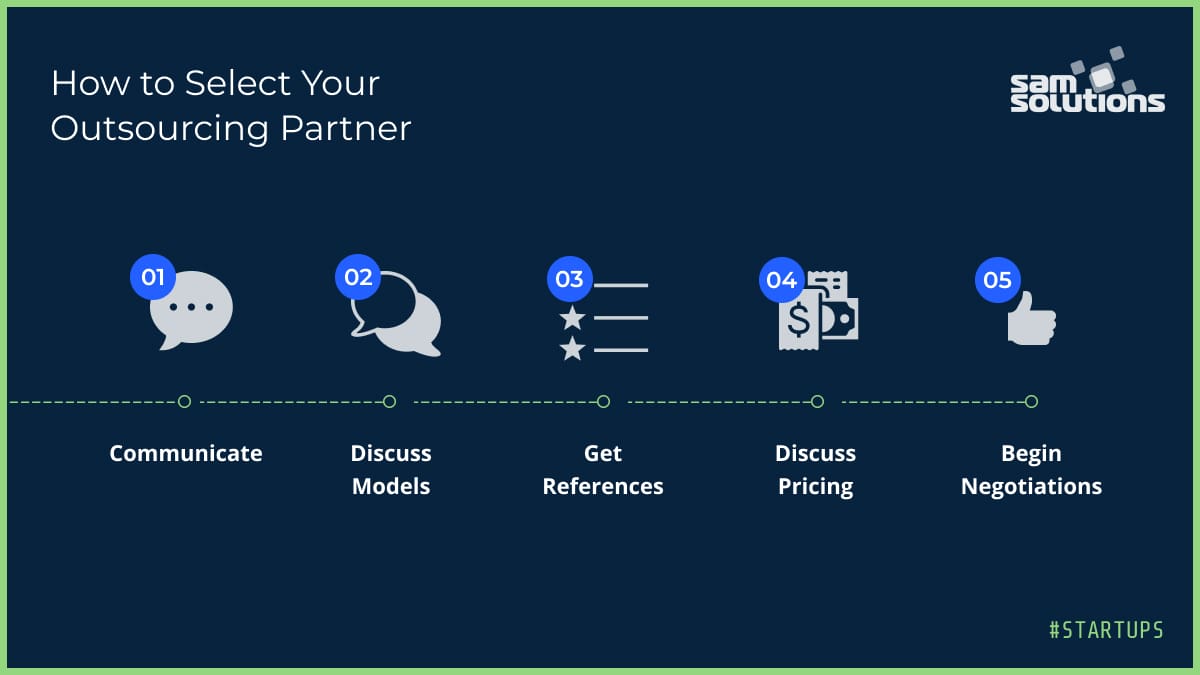
In your search for the ideal outsourcing partner, utilize multiple resources to develop a short list of outsourcing partners that may benefit your startup. Seek references from others already in the industry and perform diligent research for each.
Alternatively, utilize online listing sites that contain the name, background information, and even ratings for potential outsourcing partners – listing sites like Goodfirms, Clutch.co, and DesignRush are a good place to start.
Once your short list is filled with potential outsourcing partners, develop a deeper understanding of each of them so you can determine whether their background, business ethics, and business culture mesh well with that of your startup. Utilize these five steps to narrow the field:
- Communicate. Reach out to each partner to indicate your interest in a partnership and thoroughly communicate your needs.
- Discuss models. Specify which type of location-based and contract-based outsourcing models you prefer and determine the partner’s amenability to each.
- Get references. Request references who can speak to the potential partner’s skill and work ethic; be sure to contact each reference provided to get an idea of the partner’s track record.
- Discuss pricing. Depending on your contract preferences, ask the potential partner for an estimate you can compare with other short-list finalists.
- Begin negotiations. Once you have information and estimates from all potential partners, compare each and choose the best and most cost-effective. Keep in mind that when it comes to hiring an outsourcing partner for your startup, you’ll likely get what you pay for.
Growing Role of Startups in the Modern Economy
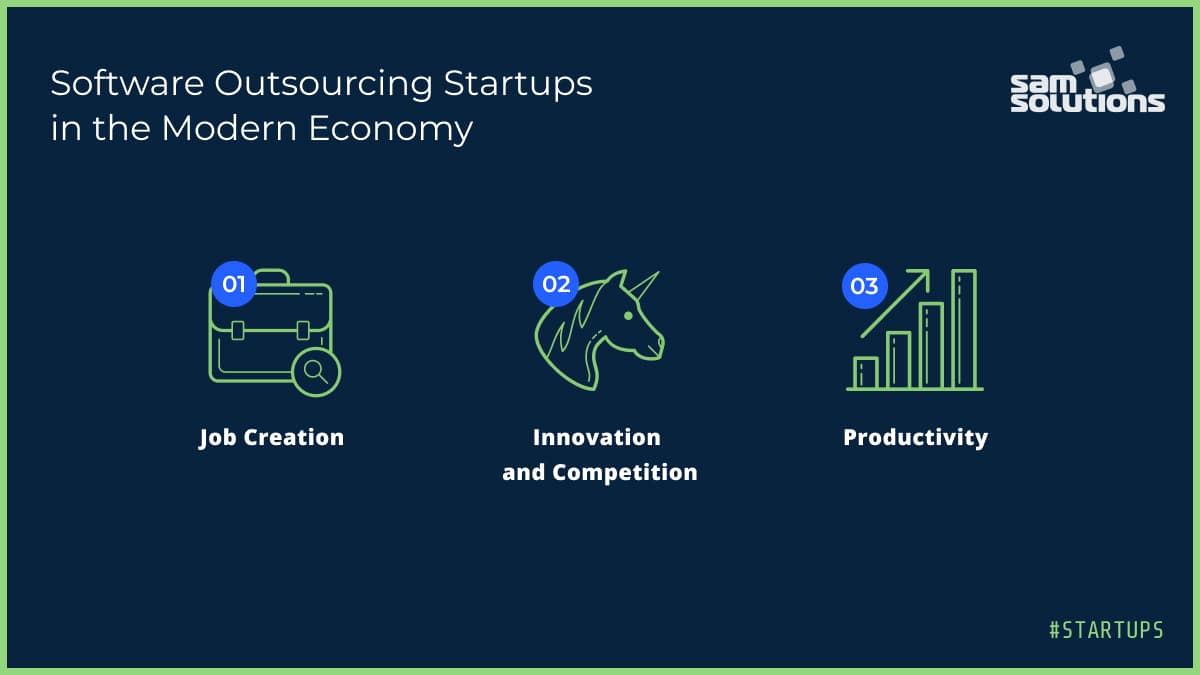
According to the Center for American Entrepreneurship, economists have noted three major roles startups have within the modern economy:
Job creation. Startups result in an average of 1.5 million new jobs per year post-recession. In an economy rightfully concerned with the number of jobs – and financial resources – available for its people to continue to invest in economic advancement, startups are crucial.
Innovation and competition. Most startups begin with an idea about how to improve the world’s current situation, then endeavor to provide a solution. The competition that ensues drives further innovations from other companies in the same niche – and offers consumers more options in the process.
Productivity. To economists, productivity is achieved by two different types of efficiency – the first involves the innovations startups use to create more efficient operations. The second – “reallocative efficiency” – refers to the use of resources and money where they’re the most beneficial; startups challenge older, inefficient firms and continue to encourage competition, the freshness of ideas, and the eventual turnover of the life cycle of a business. If you’re wondering how to outsource software development, let’s first delve into some of the challenges tech startups face.
Why SaM Solutions?
A leading voice in the global tech outsourcing community, SaM Solutions has compiled more than 30 years in the tech industry. Interested in figuring out how to outsource software development for business growth?
We’re a globally-based, enterprise-level partner with a number of expert teams experienced in software engineering, mobile development, IoT, and eCommerce solutions like Sitecore and others.
As a result, SaM Solutions has built partnerships with a large number of multinational corporations, including FPX, Toradex, Oracle, and Coveo, and remain Gold Microsoft Partners as well as SAP Silver Partners.
Startup Support Program by SaM Solutions
With the launch of our Startup Support Program, SaM Solutions continues to double down on our support of the startup community, particularly small businesses and early-stage startups.
Many of these companies are wondering how to outsource software development, which is exactly why we created our startup program.
Through the initiative, we endeavor to help guide startups through the early stages by providing expert advice and financing. Thus far, we’ve assisted multiple startups and will continue to select others.
Success Stories
- Sun E Mates. After successfully prototyping a smart, IoT-based parcel box known as the “SoliuxBox,” California startup SunEMates began to experience challenges with refining the IoT technology, finding investors, and blueprinting the path to scalable success.
After partnering with SaM Solutions’ Startup Support Program, Sun E Mates fine-tuned the architecture and completed initial development. Sun E Mates is currently demonstrating the final “SunBox” product to investors.
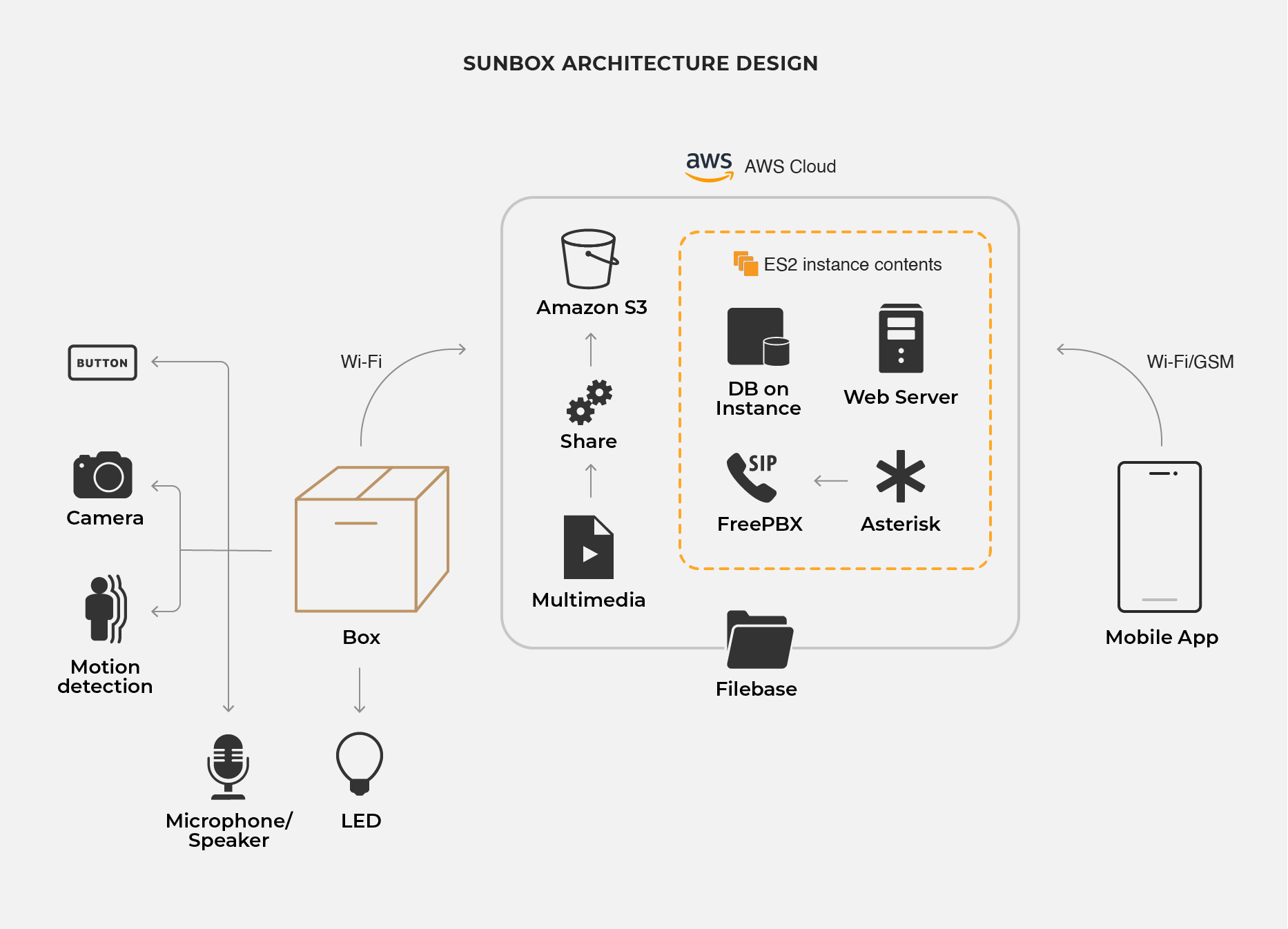
Learn more about the project – and how SaM Solutions helped this startup become an industry disruptor – via this AWS IoT Case Studies page.
Interested in our Startup Support Program? Click here.


